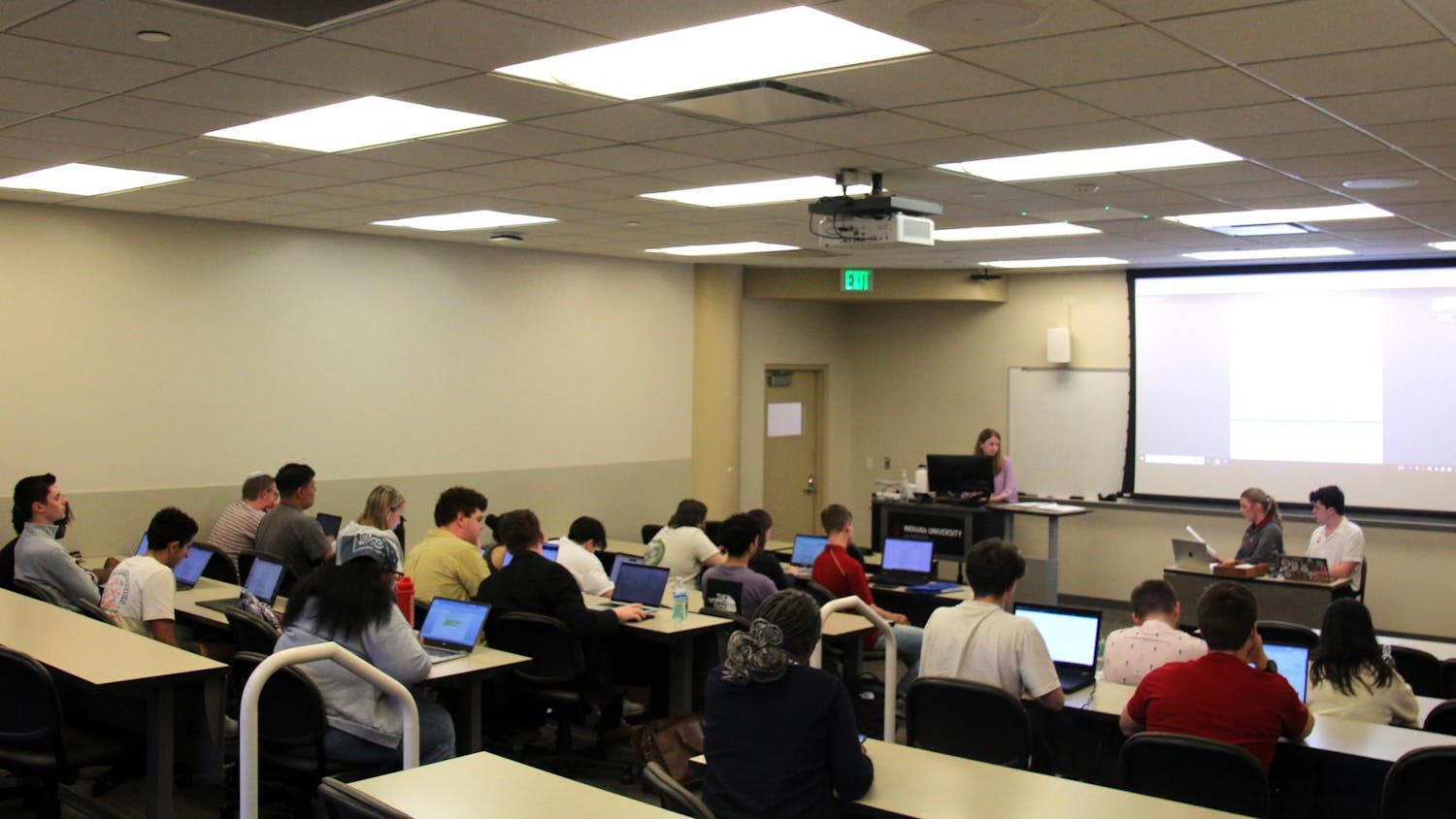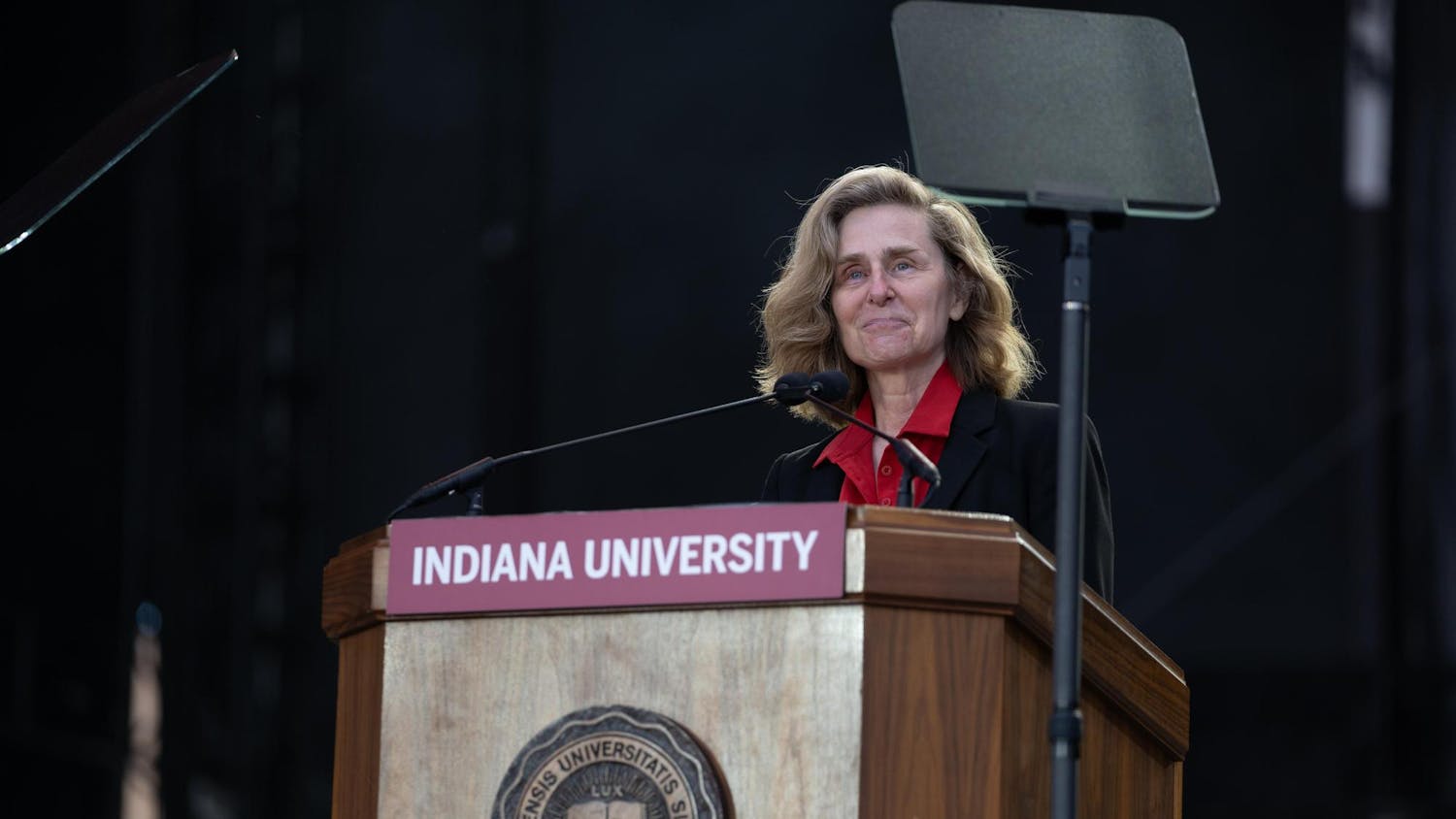For decades, Hoosiers have carved their initials into IU's beloved Sweetheart Tree, which was removed this week after years of declining health.
However, this IU tradition may have actually hurt the tree and possibly caused its death.
“I don’t know what caused the damage that caused this tree to die,” University landscape architect Mia Williams said. “The only thing I can say with 100 percent certainty is it didn’t help the tree.”
The University was forced to remove the American beech because a dead or dying tree can drop branches, making it a safety hazard.
IU plans to survey the area in the coming months to determine what kind of tree would be suited for the environment and plant a replacement by the fall.
“Every effort was made to preserve it,” IU spokesman Chuck Carney said. “It’s a historical piece of campus, and we’re sad its time has come and gone.”
Campus lore alleges when the Dunn family sold land to IU, they mandated the tree be protected because their oldest daughter and her sweetheart carved their initials into the tree's bark.
However, according to a story posted on IU's pride and traditions website in January, "the deed to Dunn’s Woods indicates that the Dunns never mandated the protection of the Sweetheart Tree."
The tree has stood outside the Chemistry Building since its construction in 1931, according to the traditions website, and when an expansion of the building was constructed in the 1980s, architects decided to build around the beloved beech.
When IU began removing the tree in sections Wednesday, pieces were examined to determine if they could be repurposed into something for the campus to treasure.
Williams said after the first day of removal, no salvageable wood had been found, but she is hopeful some will be discovered.
Beech trees are particularly susceptible to damage and disease, Williams said, because they don’t create “scabs” over wounds as well as other trees, such as maples, do.
A tree’s vascular system is close to the surface, Williams said, so when the bark of a tree is cut or damaged, its rough equivalent of veins might be exposed. This allows diseases to enter the organism easily.
The Sweetheart Tree started to show signs of disease in the last few years when upper branches produced small or discolored leaves.
The University tried to supplement the tree’s nutrients, which has saved other trees on campus, but the decline continued. Williams said the probability was very high the Sweetheart Tree would start dropping branches, so removal became the only option.
“It was something that had to be done,” Carney said. “There wasn’t any way to save it.”
Analysis of the tree’s rings can be done once it is removed, which will help determine the tree’s cause of death, its age and if any particular changes — such as the construction of the Chemistry Building — affected its health significantly.
Although Williams said it was sad to see such an iconic part of IU’s campus disappear, she was heartened by the public’s emotional reaction to the news.
“I know there’s something special about the trees we have and how they make us feel,” Williams said. “When I hear the reactions to us having to remove this tree, it makes me feel encouraged about how our campus community relates to trees. To me it proves for students, faculty, staff and visitors — there’s a relationship there.”




